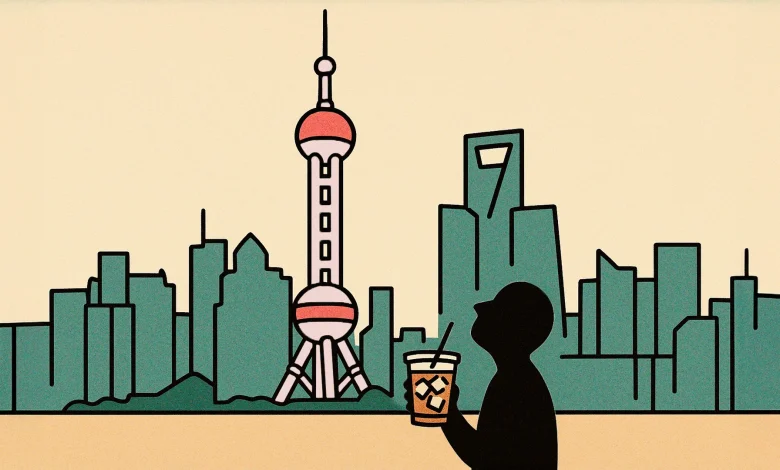Shanghai being a global coffee hub is an indication of where the industry is going

- With 9,115 cafés – more than London, New York or Tokyo – the city has become coffee’s most dynamic testing ground
- China’s coffee consumption has grown by 150% in the last 10 years, reshaping global demand
- Shanghai’s consumers prize customisation, community and design – a preview of where coffee culture is heading worldwide
SHANGHAI once drew its identity from tea. Today, it points to the future of coffee. Bloomberg recently anointed the metropolis “the world’s most compelling coffee city”, a title that would have seemed fanciful just a decade ago.
Yet the numbers are difficult to dispute. As of 2024, the city had a whopping 9,115 coffee shops – more than London, New York or Tokyo. China’s coffee consumption has grown by 150% in the last 10 years, far above global averages. And an entire ecosystem – homegrown roasters, boutique chains, and tech-enabled retail concepts – has sprung up almost overnight.
But its significance extends far beyond scale. Shanghai has become the world’s most compelling coffee hub because it shows what the next era of coffee consumption could look like: experiential, tech-driven, and community-building.
“China is a country of 1.4 billion food lovers,” says Marty Pollack, Co-Founder and CEO at Torch Coffee. “People here care deeply about flavour – everything revolves around sensory experience. You’ll rarely meet someone who says, ‘I’ll have whatever.’”
“Curiosity drives behaviour. If something tastes new or interesting, people will pay for it, sit down, and learn about it. That’s why you can sell a $20 cup of coffee in Shanghai – not because it’s exclusive, but because people are genuinely obsessed with food and drink.”
As global demand slows in Europe and the United States – and younger consumers shift away from “specialty,” or at least change consumption preferences – the coffee industry’s centre of gravity could be shifting to emerging markets. Within this, Shanghai is not merely catching up; it’s leading. Its rise provides a preview of the innovations and behaviours that may soo, to an extent, shape coffee markets everywhere.
Café proliferation alone does not make a coffee capital. What distinguishes Shanghai is how the city drinks – fast, digitally and with product and flavour curiosity. Delivery platforms dispatch single lattes in minutes. Coffee actors gets huge investment from tech giants – cafés gather data with astounding precision, optimising menus to track tastes in real time.
International brands – from Blue Bottle to Starbucks – have built showpieces here, but domestic chains have steered the direction of travel. The likes of M Stand, Manner Coffee and Seesaw have expanded as aggressively as any tech startup, backed by venture capital betting on coffee. Luckin Coffee’s explosive success – selling millions of cups in a day – shows the power of national reach combined with local taste-making.
“In the early days, people brewed coffee almost like tea – incredibly light,” says Stephen Coffey, CEO and Founder of CLS. “But once local roasters started refining their craft, the quality jumped fast. By the time Luckin entered the market, you could get an Americano or espresso that genuinely rivalled, even surpassed, Starbucks. That shift showed just how quickly standards here can rise.”
Shanghai’s cafés do more than sell beverages. Its flourishing coffee shop scene firmly embodies haipai culture – the city’s distinct entrepreneurial spirit and cultural identity since the late 20th century. Minimalist brew bars cater to the quality-obsessed; colourful dessert cafés fuel Instagram; and coffee-plus-lifestyle concepts abound – books, fashion, pets. Coffee is a means of self-expression rather than a morning necessity.
Where traditional markets insist on heritage purity, Shanghai has embraced innovation as culture. That dynamism will matter as consumer expectations evolve everywhere.
Local leadership in taste, storytelling and production
For years, coffee in China was defined by foreign influence. Today, Shanghai’s roasters and baristas shape their own narrative. They prize balance and approachability – flavour profiles that serve both espresso-based drinks and iced concoctions for younger audiences.
Partnerships with Brazil and Africa – Ethiopia in particular – as well as China’s own production of Yunnan Arabicas underpin consumption and sourcing strategies.
“There’s still a learning curve around sourcing,” says Stephen. “Some buyers chase the cheapest lots – a few cents less from Brazil one year, then they can’t get it again and scramble to replace it. They just don’t have decades of experience in coffee buying yet. But they’re learning fast, and the ambition is there.”
Crucially, China is becoming a producer nation with global intent. But with national annual consumption reaching around 400,000 tonnes and Yunnan producing only about 100,000 tonnes, it is still looking to develop. Local producers and roasters are building shared value chains: origin education, farm-to-cup storytelling, and transparent pricing – the very features Western markets spent decades trying to perfect.
“Much of China’s coffee community is deeply connected to origin – many have spent time on farms, worked harvests, and even carried out their own processing in Yunnan,” says Marty. “The degree of vertical integration here is unlike anywhere else I’ve seen. It’s created a practical understanding of coffee production that, for many Western roasters, exists only in theory.”
“The speed of innovation here is also unbelievable. What takes a year in the US happens in a month in China. Opening a café from site visit to launch can take just 40 days. It’s the most entrepreneurial environment I’ve ever seen – minimal red tape, pure market energy. If a café closes, another opens within weeks. People take risks constantly; that’s how the scene evolves so fast.”
Where Western specialty can feel austere or over-technical, Shanghai’s energy is playful. Sustainability is also framed as supporting rural livelihoods – a practical lens rooted in national priorities rather than imported certification ideals.
“China absolutely will influence how coffee is done globally,” says Marty. “Chinese consumers don’t buy into vague sustainability stories or certifications, they want proof. That skepticism keeps the industry honest. Add to that massive buying power and vertical integration, and China is becoming a force the global market can’t ignore.”
This consumer-friendly pragmatism may be the secret ingredient missing from other mature markets.
A global market looking east for momentum
Shanghai’s ascent comes as the traditional coffee powers face stagnation. In Europe and America, consumption is plateauing. Inflation pressures diners to trade down. The once-ascendant specialty segment is struggling to stay distinctive.
Producers and traders are adapting. Brazilian coffee exports to China jumped 186% year-on-year in 2023–24. Ethiopia has gained from Belt and Road-fuelled logistics upgrades, shrinking transport times.
China still drinks less coffee per person than nearly any major market – its per capita consumption is just five cups a year, compared to 400 cups in the US and 1,000 in Norway. But as incomes rise – despite China’s current sluggish economy – so does the likelihood that coffee powers a generation’s working day.
“China’s huge – and incredibly diverse,” says Stephen. “In some cities, people still go to cafés just to take photos, not drink coffee. But that’s changing quickly.”
“The big three – Beijing, Shanghai and Guangzhou – are already mature coffee markets, and now second-tier cities like Wuhan are catching up. The ‘next city’ model is where the real growth will come from. China is a beast – once it moves, the rest of the coffee world will feel it.”
But the growth story is not just quantitative, it is directional. Shanghai consumers show what tomorrow’s global coffee drinker desires: customisation, not conformity; tech-enabled convenience; design and culture as value drivers; and inclusivity rather than intimidation.
The city’s success stems from its ability to merge global quality standards with local creativity – a model that feels increasingly relevant as the West grapples with aging consumers and demand erosion. What Shanghai demonstrates is that the future of coffee could lie in community, playfulness, and accessibility.
Coffee Intelligence
Want to read more articles like this? Sign up for our newsletter here.





